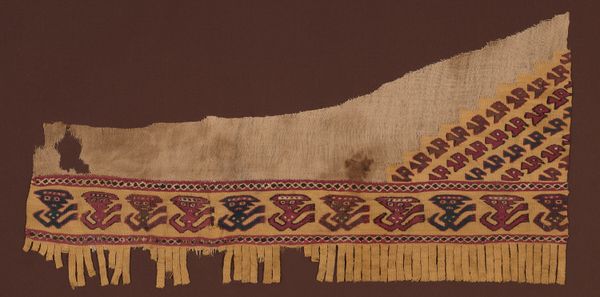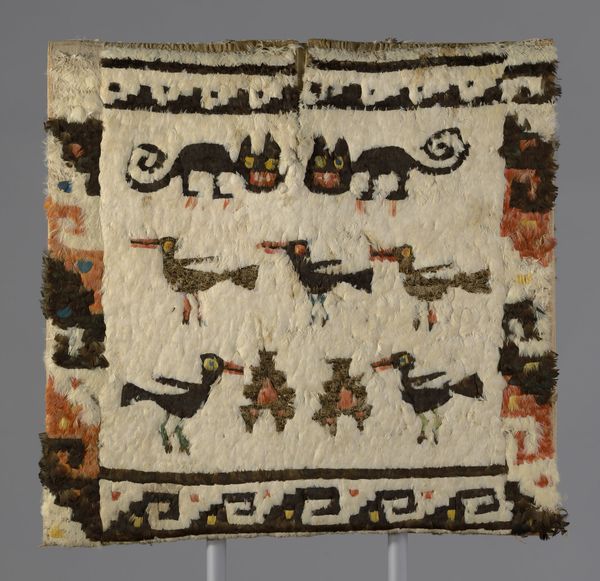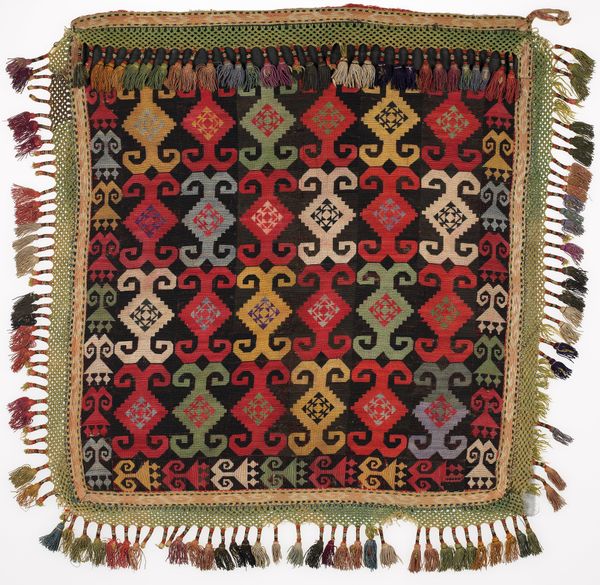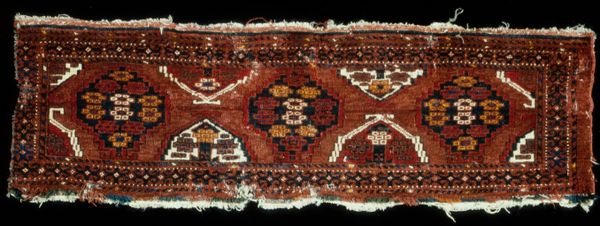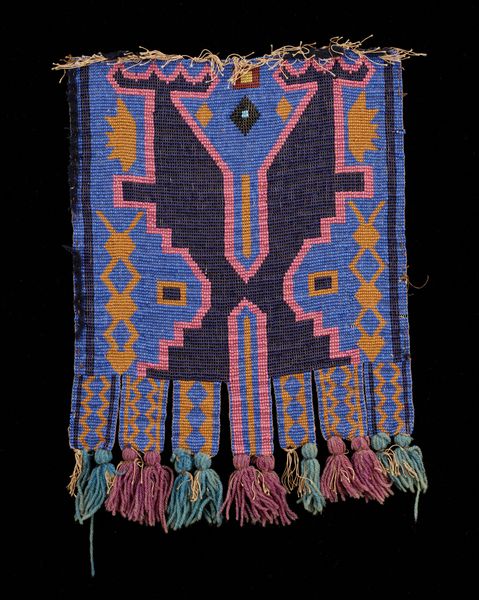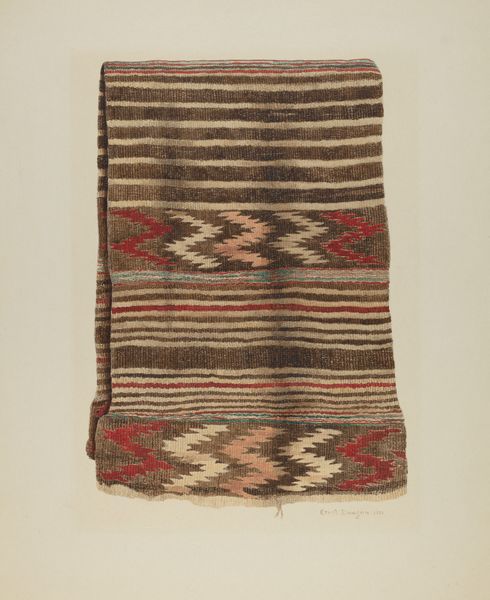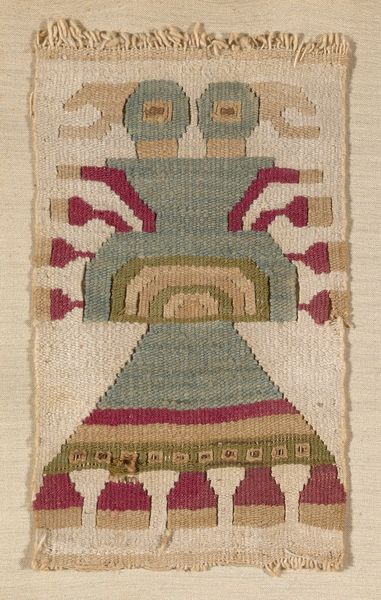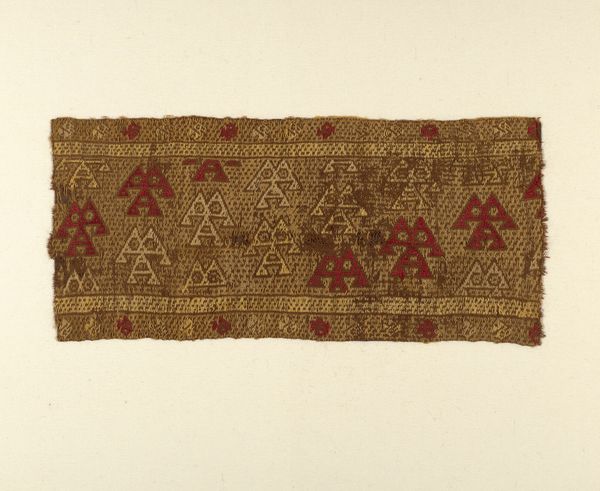
fibre-art, weaving, textile
#
fibre-art
#
weaving
#
textile
#
geometric
#
line
#
indigenous-americas
Dimensions: 88.9 × 70.2 cm (35 × 27 5/8 in.)
Copyright: Public Domain
Curator: Let's turn our attention to this intriguing piece, "Half of a Tabard," created by the Chimú culture sometime between 1400 and 1532. It's a woven textile currently residing at The Art Institute of Chicago. Editor: My first impression is its surprisingly modern aesthetic. The bold lines and simplified animal figures are quite striking against the textured background. It has a graphic quality that I find quite compelling. Curator: Indeed. Focusing on the formal elements, the geometric patterns at the lower register play beautifully against the more organic forms of the animal motifs up top. The choice of a limited palette—brown, off-white, with touches of ochre and reddish-orange—creates a strong sense of visual cohesion. Editor: It also speaks to the context in which it was made, no? These tabards were likely high-status garments. Considering the level of craftsmanship involved in weaving something like this, its intended wearer must have held considerable power. This was before the Inca Empire's expansion, reflecting an autonomous society. Curator: Absolutely. The geometric fretwork is also worth examining more closely. These repetitive designs create a sense of rhythm and order. You can almost imagine them as representing a specific social hierarchy, the formal language contributing to that expression of hierarchy. Editor: I also find myself wondering about the social life of such an object. Who created this, and for whom? What ceremonies or events would it have been part of? I suspect it signifies an elite’s participation in both practical and symbolic power. Curator: The animals, perhaps foxes or felines, flanking the neck opening – how do we interpret their representation? Their stance is active and perhaps protective. And given the period, is there a syncretism present—between traditional animal totems and nascent state iconography? Editor: Thinking about this being only "half" of a tabard raises additional questions too. Was this fragment repurposed? Damaged and divided after conflict? The story of how this object came to be displayed as a single half might offer insights into post-colonial collection practices. Curator: Your point regarding the "half" aspect intrigues me; how fragmentation alters perception and what semiotic strategies indigenous weavers applied to create meaning and cultural assertion within those visual constraints. Fascinating. Editor: It's these threads of history, design, and culture that, to me, make objects like this endlessly enriching. It really highlights the way even a partial artifact is far from incomplete. Curator: A thought-provoking synthesis that resonates beyond aesthetics, emphasizing cultural narrative through abstraction and form.
Comments
No comments
Be the first to comment and join the conversation on the ultimate creative platform.


